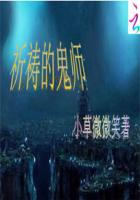Doubtless, also, Copernicus felt a considerable difficulty as to the nature of the materials from which Ptolemy's wonderful sphere was to be constructed. Nor could a philosopher of his penetration have failed to observe that, unless that sphere were infinitely large, there must have been space outside it, a consideration which would open up other difficult questions. Whether infinite or not, it was obvious that the celestial sphere must have a diameter at least many thousands of times as great as that of the earth. From these considerations Copernicus deduced the important fact that the stars and the other celestial bodies must all be vast objects. He was thus enabled to put the question in such a form that it could hardly receive any answer but the correct one. Which is it more rational to suppose, that the earth should turn round on its axis once in twenty-four hours, or that thousands of mighty stars should circle round the earth in the same time, many of them having to describe circles many thousands of times greater in circumference than the circuit of the earth at the equator? The obvious answer pressed upon Copernicus with so much force that he was compelled to reject Ptolemy's theory of the stationary earth, and to attribute the diurnal rotation of the heavens to the revolution of the earth on its axis.
Once this tremendous step had been taken, the great difficulties which beset the monstrous conception of the celestial sphere vanished, for the stars need no longer be regarded as situated at equal distances from the earth. Copernicus saw that they might lie at the most varied degrees of remoteness, some being hundreds or thousands of times farther away than others. The complicated structure of the celestial sphere as a material object disappeared altogether; it remained only as a geometrical conception, whereon we find it convenient to indicate the places of the stars. Once the Copernican doctrine had been fully set forth, it was impossible for anyone, who had both the inclination and the capacity to understand it, to withhold acceptance of its truth. The doctrine of a stationary earth had gone for ever.
Copernicus having established a theory of the celestial movements which deliberately set aside the stability of the earth, it seemed natural that he should inquire whether the doctrine of a moving earth might not remove the difficulties presented in other celestial phenomena. It had been universally admitted that the earth lay unsupported in space. Copernicus had further shown that it possessed a movement of rotation. Its want of stability being thus recognised, it seemed reasonable to suppose that the earth might also have some other kinds of movements as well. In this, Copernicus essayed to solve a problem far more difficult than that which had hitherto occupied his attention. It was a comparatively easy task to show how the diurnal rising and setting could be accounted for by the rotation of the earth. It was a much more difficult undertaking to demonstrate that the planetary movements, which Ptolemy had represented with so much success, could be completely explained by the supposition that each of those planets revolved uniformly round the sun, and that the earth was also a planet, accomplishing a complete circuit of the sun once in the course of a year.
[PLATE: EXPLANATION OF PLANETARY MOVEMENTS.]
It would be impossible in a sketch like the present to enter into any detail as to the geometrical propositions on which this beautiful investigation of Copernicus depended. We can only mention a few of the leading principles. It may be laid down in general that, if an observer is in movement, he will, if unconscious of the fact, attribute to the fixed objects around him a movement equal and opposite to that which he actually possesses. A passenger on a canal-boat sees the objects on the banks apparently moving backward with a speed equal to that by which he is himself advancing forwards. By an application of this principle, we can account for all the phenomena of the movements of the planets, which Ptolemy had so ingeniously represented by his circles. Let us take, for instance, the most characteristic feature in the irregularities of the outer planets. We have already remarked that Mars, though generally advancing from west to east among the stars, occasionally pauses, retraces his steps for awhile, again pauses, and then resumes his ordinary onward progress. Copernicus showed clearly how this effect was produced by the real motion of the earth, combined with the real motion of Mars. In the adjoining figure we represent a portion of the circular tracks in which the earth and Mars move in accordance with the Copernican doctrine. I show particularly the case where the earth comes directly between the planet and the sun, because it is on such occasions that the retrograde movement (for so this backward movement of Mars is termed) is at its highest. Mars is then advancing in the direction shown by the arrow-head, and the earth is also advancing in the same direction. We, on the earth, however, being unconscious of our own motion, attribute, by the principle I have already explained, an equal and opposite motion to Mars. The visible effect upon the planet is, that Mars has two movements, a real onward movement in one direction, and an apparent movement in the opposite direction. If it so happened that the earth was moving with the same speed as Mars, then the apparent movement would exactly neutralise the real movement, and Mars would seem to be at rest relatively to the surrounding stars. Under the actual circumstances represented, however, the earth is moving faster than Mars, and the consequence is, that the apparent movement of the planet backwards exceeds the real movement forwards, the net result being an apparent retrograde movement.
With consummate skill, Copernicus showed how the applications of the same principles could account for the characteristic movements of the planets. His reasoning in due time bore down all opposition. The supreme importance of the earth in the system vanished. It had now merely to take rank as one of the planets.
The same great astronomer now, for the first time, rendered something like a rational account of the changes of the seasons. Nor did certain of the more obscure astronomical phenomena escape his attention.
He delayed publishing his wonderful discoveries to the world until he was quite an old man. He had a well-founded apprehension of the storm of opposition which they would arouse. However, he yielded at last to the entreaties of his friends, and his book was sent to the press. But ere it made its appearance to the world, Copernicus was seized by mortal illness. A copy of the book was brought to him on May 23, 1543. We are told that he was able to see it and to touch it, but no more, and he died a few hours afterwards. He was buried in that Cathedral of Frauenburg, with which his life had been so closely associated.















